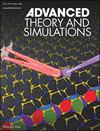Optimized Design of Micro-TEC with Variable Cross-Section Structure
IF 2.9
4区 工程技术
Q1 MULTIDISCIPLINARY SCIENCES
引用次数: 0
Abstract
The increasing heat flux in microelectronic device challenges traditional cooling methods. Thermoelectric coolers (TECs) offer effective hotspot management through direct integration with microelectronic components. However, their efficiency is limited by thermoelectric properties, resulting in high power consumption and additional thermal loads. This study introduces a 3D finite element model to optimize micro-TEC with variable cross-sections. Key parameters, including cross-sectional area ratio (s), packing density (pd), leg center width (w), leg height (l), and external conditions (ambient temperature Tm, heat load Qc) are systematically analyzed. At Tm = 90 °C and Qc = 1 W, with pd = 120 legs cm−2, l = 0.5 mm and identical TE leg volume, the novel design reduces power consumption from 1.97 W in traditional designs to 1.56 W, a reduction of 20.8%. Further optimization achieved a minimum power consumption of 1.43 W at Tm = 90 °C, Qc = 1 W, pd = 528 legs cm−2, w = 0.2 mm, l = 0.2 mm and s = 6.85. These findings provide a framework for reducing TEC power consumption and material costs, advancing efficient cooling in microelectronics.

具有可变截面结构的 Micro-TEC 优化设计
微电子器件热流的不断增加对传统的冷却方法提出了挑战。热电冷却器(tec)通过直接集成微电子元件提供有效的热点管理。然而,它们的效率受到热电特性的限制,导致高功耗和额外的热负荷。本文采用三维有限元模型对变截面微型tec进行优化。系统分析了截面积比(s)、填料密度(pd)、支腿中心宽度(w)、支腿高度(l)、外部条件(环境温度Tm、热负荷Qc)等关键参数。在Tm = 90°C, Qc = 1 W, pd = 120支腿cm - 2, l = 0.5 mm, TE支腿体积相同的情况下,新设计将功耗从传统设计的1.97 W降低到1.56 W,降低了20.8%。在Tm = 90°C、Qc = 1 W、pd = 528腿cm - 2、W = 0.2 mm、l = 0.2 mm和s = 6.85条件下,进一步优化实现了1.43 W的最小功耗。这些发现为降低TEC功耗和材料成本提供了一个框架,促进了微电子领域的高效冷却。
本文章由计算机程序翻译,如有差异,请以英文原文为准。
求助全文
约1分钟内获得全文
求助全文
来源期刊

Advanced Theory and Simulations
Multidisciplinary-Multidisciplinary
CiteScore
5.50
自引率
3.00%
发文量
221
期刊介绍:
Advanced Theory and Simulations is an interdisciplinary, international, English-language journal that publishes high-quality scientific results focusing on the development and application of theoretical methods, modeling and simulation approaches in all natural science and medicine areas, including:
materials, chemistry, condensed matter physics
engineering, energy
life science, biology, medicine
atmospheric/environmental science, climate science
planetary science, astronomy, cosmology
method development, numerical methods, statistics
 求助内容:
求助内容: 应助结果提醒方式:
应助结果提醒方式:


